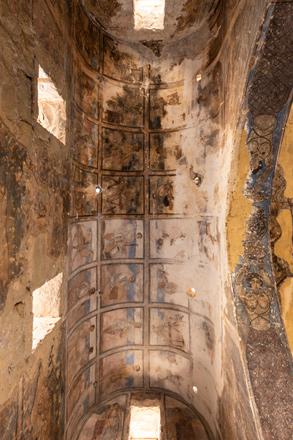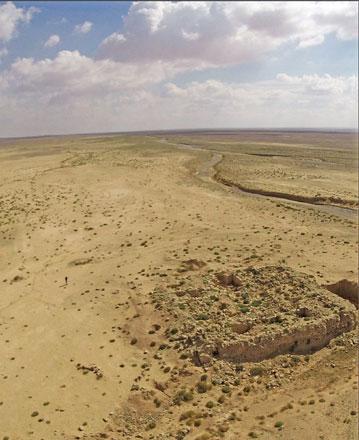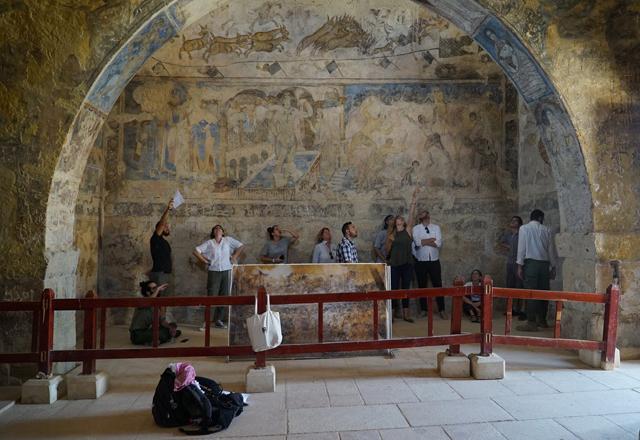You are here
Italian architect seeks to unravel ‘mystery’ of Qasr Amra
By Saeb Rawashdeh - Sep 12,2019 - Last updated at Sep 16,2019

The interior of the UNESCO heritage site, Qasr Amra (Photo courtesy of Giorgio Sobrà)
AMMAN — The desert castle Qasr Amra (or Qusayr Amra), located 25 kilometres west of Azraq, is one of the most important monuments in Jordan and in the whole world, said an Italian architect.
“It bears the only preserved large wall-painting cycle dating back to the Umayyad period [first half of the 8th century AD],” noted Giorgio Sobrà who is in charge of the restoration of the castle.
The castle was listed as a UNESCO World Heritage Site as early as 1985. In 2011, Sobrà and his team from ISCR (Instituto Superiore per la Conservazione ed il Restauro: High Institute for Conservation and Restoration, Rome) started the restoration.
“The bathhouse, being the only extant part of a larger and less preserved settlement, is still quite mysterious: We know with a good approximation when it was built and that it belonged to the Umayyad elite,” the architect said, adding that the role of this building, apart from its use as a spa, and its connection with the caliph is complex.
During the first Islamic dynasty, artists were still strongly linked to Hellenistic-Roman and biblical models, skilled enough to merge them, if necessary, “to create a celebratory context of the new rulers”, Sobrà said.
The restoration process in Qasr Amra was conducted in cooperation with the Department of Antiquities, and requires a long time to complete, Sobrà said, with another restoration campaign starting soon.
“The 2019 campaign will be held from the second half of September to mid-November, focusing on one of the most iconic elements within the complex: The barrelled vault covering the east aisle of the main hall, where the activity of the 8th century craftsmen involved in the construction process of the building are depicted,” the expert stated.
The aim of the upcoming campaign is to complete the restoration of this section of the paintings, restoring the legibility of ancient forms and colours for the Jordanian people and visitors from all over the world, Sobrà said.
The restoration process in ‘Amra, was conducted in cooperation with the Department of Antiquities,
and it requires a long time because the intervention is mainly funded by ISCR and by World
Monuments Fund, Sobrà said.
According to the scholar, the location of the site also allowed the team to build relationships with the local community in the area.
Related Articles
AMMAN — Qasr Mushash, located 40 kilometres east of Amman, was probably used for postal services during the Umayyad period, according to a G
AMMAN — Italian archaeologists and local officials on Sunday launched the “Italian Archaeological Consortium in Jordan” to highlight Italian
AMMAN — The Second Janet Abu Lughod seminar, organised by Studio-X Amman and Sijal Institute for Arabic Language and Culture was a “wonderfu

















